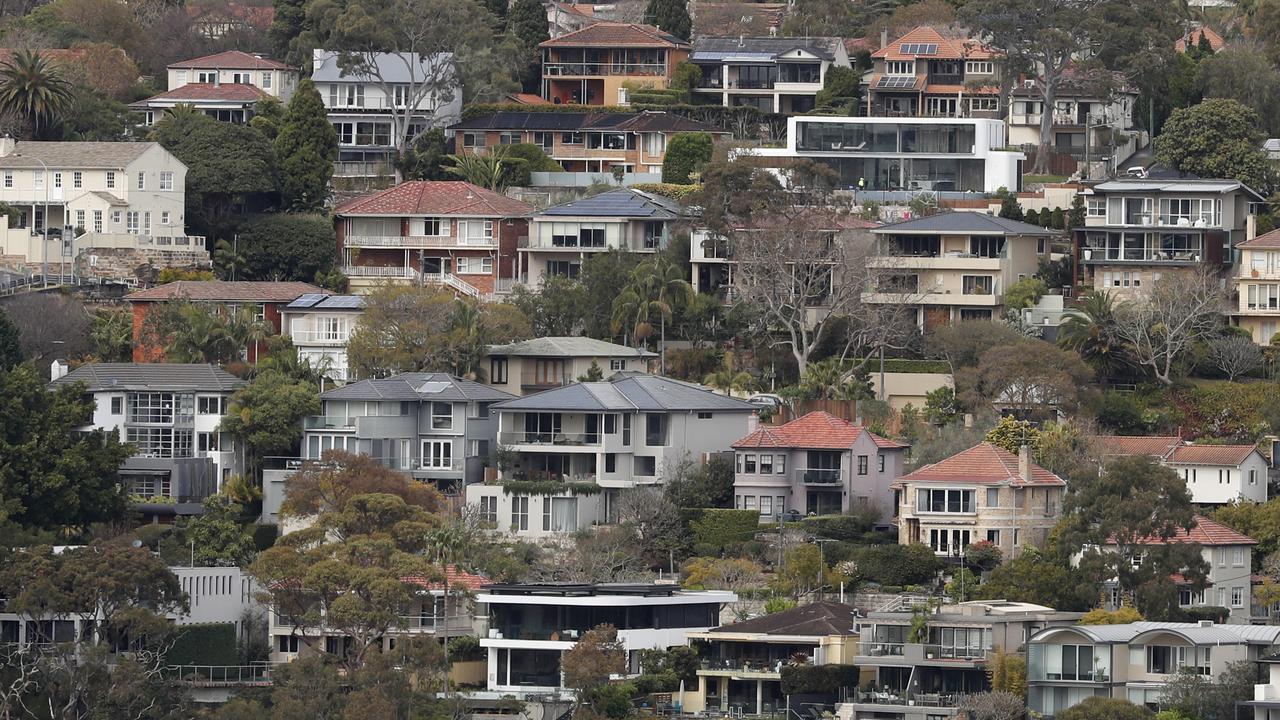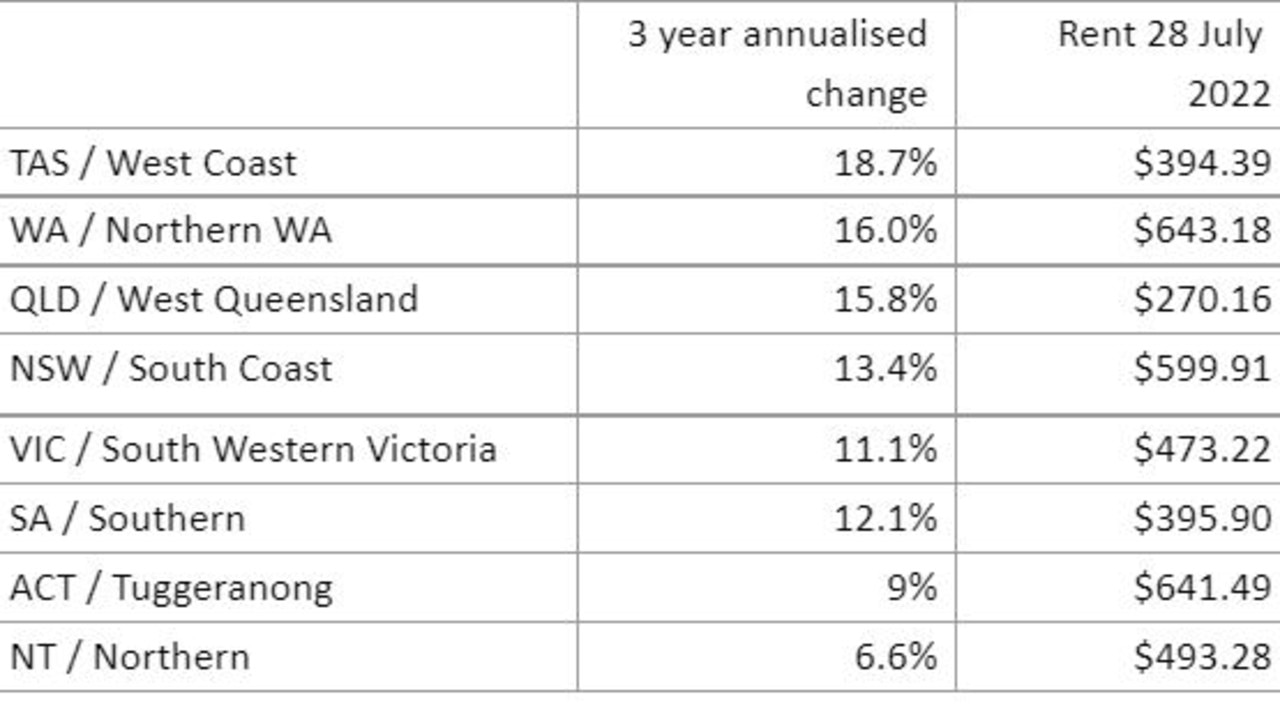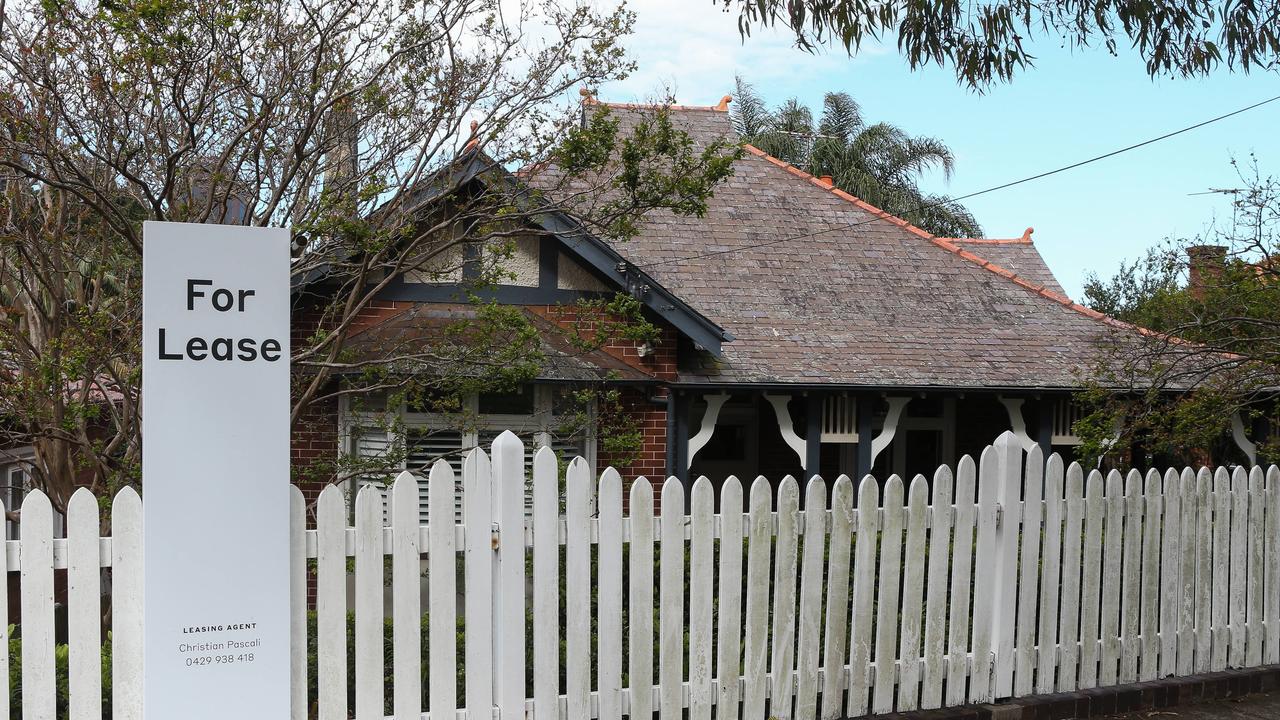Revealed: Australia’s rental ‘red zones’ where price growth outstrips wages
The full extent of Australia’s housing crisis is revealed by data showing the rental “red zones” where prices are way ahead of wage growth.

New rental data analysis has revealed Australia’s “red zones” where prices have surged ahead of wage increases.
The analysis comes as part of the Everybody’s Home campaign which focuses on fixing the nation’s worsening housing crisis.
The campaign also coincides with Homelessness Week, with the data showing the regions across Australia where residents have been hit hardest.
The research references rental data over three years from investment and research data company SQM and compares it with the wage growth of workers in retail and healthcare, with social assistance and rental increases also factored in.
Employees in these occupations saw average wages increase just 2.3 per cent annually over the three years, while some areas saw rent prices jump by more than 18 per cent over the same period.

The data analysis shows regional parts of Australia’s states and territories appeared to be feeling the impacts of the increasing rental market the most, while major cities experienced a less dramatic rise in rental costs.
One of the hardest hit areas was Tasmania’s west coast, which saw an 18.7 per cent increase in rental prices over three years, with the median weekly rent now sitting at $394.39.
Central Hobart experienced a 5.1 per cent three-year annualised change, bringing the median rent to $543.81 a week.
Northern Western Australia wasn’t far behind, with the median weekly rent now sitting at $643.18 after a 16 per cent increase.
Perth saw a change of 4.8 per cent over the same period, with the median weekly rent at $523.70.
In NSW, the south coast and the Central Tablelands experienced the biggest changes, with 13.4 per cent and 12.8 per cent increases over three years, bringing rent prices up to $599.91 and $462.68 respectively.
Sydney’s eastern suburbs experienced the least significant change, rising just 2.4 per cent to $791.85.

The Woden Valley in the ACT saw an 11 per cent annualised change over three years, bringing the weekly rent to $697.38, while the southern region of the capital saw a 3 per cent change to $690.84.
Queensland’s western region saw the biggest spike in rent prices, increasing 15.8 per cent to a median of $270.16, with northern parts of the Gold Coast coming in a close second at 15.1 per cent to $835.50.
The Brisbane CBD saw the lowest rise of 3.6 per cent to $556.60.
Southwestern Victoria was hit with an 11.1 per cent increase over the three-year period, bringing the median weekly rent to $473.22, while eastern Melbourne sits at $501.41 after a 3.2 per cent increase.
South Australia’s southern regions experienced a 12.1 per cent spike in rental prices, with a median of $395.90 a week.
Yorke and lower north SA experienced the lowest spike, though the increase was still quite steep at 8.3 per cent leading to a price of $321.88
The Northern Territory also recorded lower increases, with a 9 per cent jump over three years leading to a median weekly rent of $544.23.
Southern parts of the Territory were the least affected – $522.02 the median weekly rent after a 3.8 per cent increase.
The data analysis sheds light on just how difficult it has become for thousands of Aussies to maintain stable housing.
Kate Colvin, national spokesperson for the Everybody’s Home campaign, said research shows that rental stress is often a gateway to homelessness.
“When you combine surging rents with flat wages you put people in a financial vice. For the past three years that vice has been tightening,” she said.
“Homelessness providers are reporting stories of families with full-time breadwinners being forced to live in tents. In a wealthy nation like Australia this is nothing short of a national disgrace.”

Ms Colvin said the change of federal government at the May election offers an opportunity to “reset” and tackle Australia’s housing crisis.
She said the rate of construction of new social and affordable housing has been withering away for a decade and now was the time to give low-income earners a “genuine choice” in where they live.
“(Treasurer) Jim Chalmers and (Prime Minister) Anthony Albanese have been clear that public spending should expand the economy and improve productivity. Social housing meets those objectives better than almost anything,” she said.
“There really is no better return on the taxpayer’s dollar than providing the homes Australian families need to be healthy, productive workers, and to raise their families with the stability and security of a decent home.”
New alternative, low-cost housing would undoubtedly be welcomed by many Aussies, as it doesn’t look like the rental market will slow down any time soon.
Earlier this month PropTrack released its rental report for the June 2022 quarter, with the report finding the rental market will likely continue to heat up.
The report found a limited supply in rental properties is driving the competition, with the number of new listings in June 2022 down 13.8 per cent on the decade average.
The number of renters per rental property listed on realestate.com.au has risen 28 per cent year-on-year across capital cities, with Sydney and Melbourne experiencing the greatest increases.
PropTrack director of economic research and report author Cameron Kusher said rising prices for rentals in major cities will continue for some time, particularly as more activity returns to these areas post-Covid.
“With overseas and interstate migration returning with borders now reopened, it seems likely that rental conditions will tighten further over the coming months,” he said.
“This is likely to be most evident in Sydney and Melbourne, where rental demand and prices dropped throughout the pandemic but are now rebounding rapidly.”
The report also found that the new financial year means higher land tax charges for investors and higher interest rates in many jurisdictions.
As a result of this, many landlords will likely be looking to pass on these rising costs to renters where they can, resulting in even higher rents.






